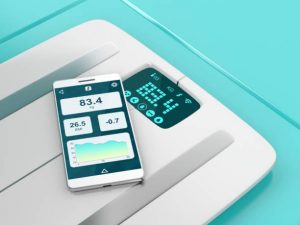Proper use and storage of a www.instrumentchoice.com.au/ digital scale are critical to maintaining its accuracy. Read the user guide and follow the precautions for storing and operating your digital scale. Always keep the scale on a flat surface, allow it to re-calibrate when moving, and weigh items in the centre of the scale. For most models, these precautions will ensure accurate measurements. Listed below are some other tips for using a digital scale.
Strain gauge load cells
 The global market for Digital Strain gauge load cells is projected to grow at a CAGR of 4.1% during the forecast period, owing to their high data processing rates, precision, and accuracy. In addition, analog strain gauge load cells are more affordable and robust, prompting end users to opt for them. Digital Strain gauge load cells are available in various sizes and shapes, and the market for these is segmented by type into single-point, bending-beam, and S-type.
The global market for Digital Strain gauge load cells is projected to grow at a CAGR of 4.1% during the forecast period, owing to their high data processing rates, precision, and accuracy. In addition, analog strain gauge load cells are more affordable and robust, prompting end users to opt for them. Digital Strain gauge load cells are available in various sizes and shapes, and the market for these is segmented by type into single-point, bending-beam, and S-type.
The most common digital strain gauge load cells are sub-miniature button load cell designs with nominal capacities of 0.1 to 5 N. They are commonly used in tension and compression tests, and their capacity range is between 0.1 N and 5 N. They use semiconductor strain gauges to measure loads. This type of load cell is designed for use with high-density wire or rope clamps. A few important factors to consider before purchasing a Digital Strain gauge load cell are:
Analog to digital converter
An analog to digital scale converter (ADC) converts voltages into decibels. In practice, an ADC measures the difference between two consecutive code levels. Its output values are a representation of the former. This can be useful when measuring the relative volume of an object, such as a cup of coffee. However, an ADC cannot measure the size of a grain. For this reason, there are some limitations when choosing an ADC.
The main difference between analogue and digital signals is the resolution. Analogue signals have an infinite number of values. In contrast, digital circuits work with binary signals, which have two discrete states. This way, an ADC converts one analogue signal to a digital one. This process produces noise in both forms, but the noise that is generated by a converter is smaller than that of an analogue signal.
Electronic weighing platform
The basic components of a www.instrumentchoice.com.au/ digital scale are an ADC and an LCD. The latter provides information on the load’s weight and its components’ counts. The weight displayed on the LCD depends on the calibration of the load cell. For example, if the load cell output is 1 kg, the display will show it in grams. For weights higher than 999 grams, it will show the weight in kilograms with three decimal places. The load cell’s characteristic is derived from the ADC count values against standard weights. The appropriate equation is then used to determine the weight at runtime. With a digital weighing platform, the measurement accuracy is enhanced by the embedded platform-based weighing system.
Load cell and electronic weighing platforms have similar construction. A microcontroller connects these devices. A load cell is a device that converts mechanical energy into an electrical effect. A load cell also includes a strain gauge. A strain gauge consists of metal tracks or a foil backing. It reads compression and tension as small changes in electrical resistance. A load cell has a resistance proportional to the weight of the load it measures.
Tare button
A tare button on a www.instrumentchoice.com.au/ digital scale is a handy feature that allows you to subtract the weight of the measuring cup or container from the total weight of the measurement. This is useful when making multiple measurements with one measuring cup or container. Ensure that the tare button is easy to hit and can be pressed twice without accidentally turning off the scale. It is also good to know that the tare button is not the same as the zeroing button.
Digital scales designed for weighing objects can come with a tare feature. When the weight of the container is greater than the scale’s capacity, press the tare button. For example, if you’re measuring a person, the tare button should display the weight of that person or item, which is displayed on a standard scale. However, if you are weighing a goldsmith’s ornaments, you can use the tare button to eliminate the hidden weight.


